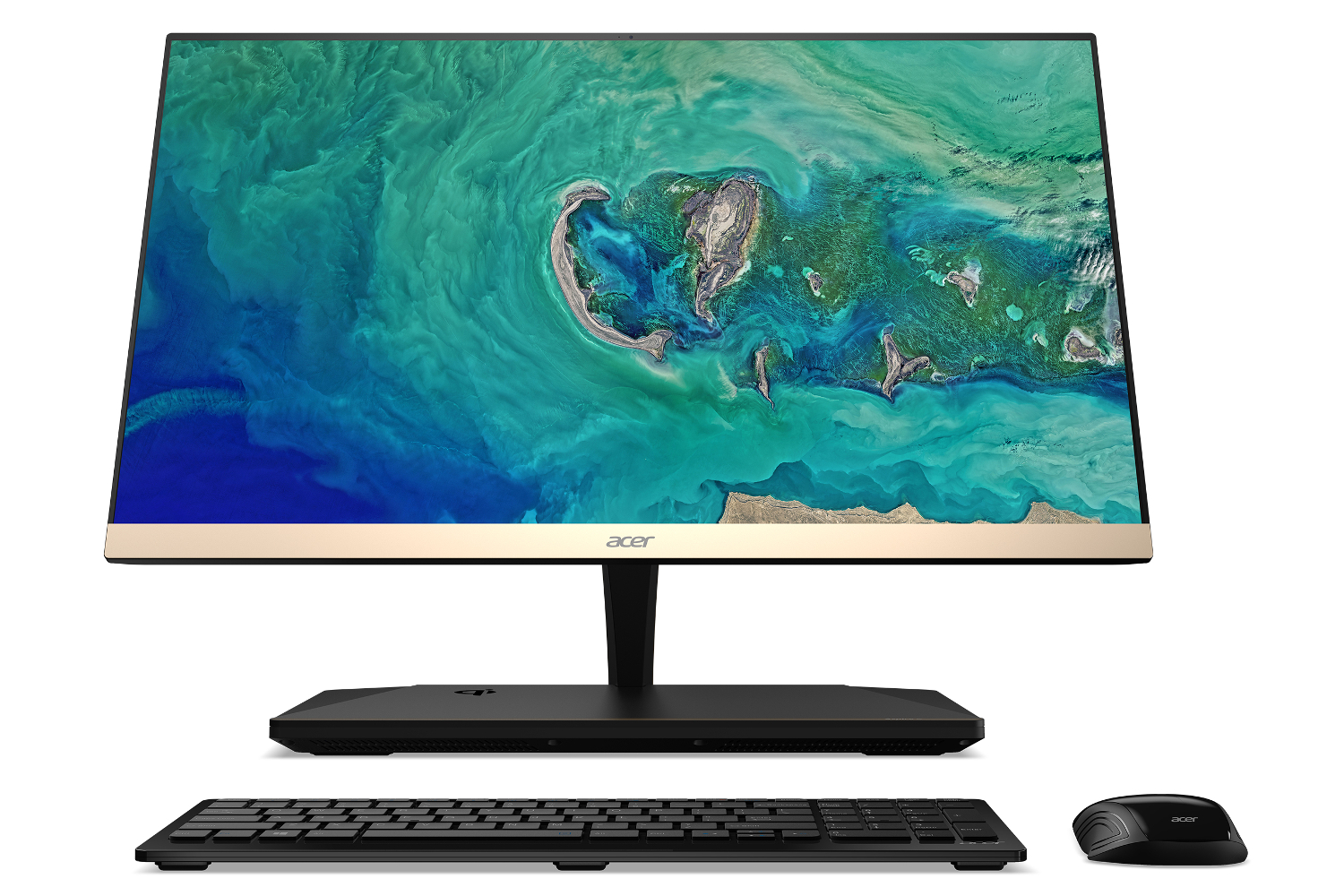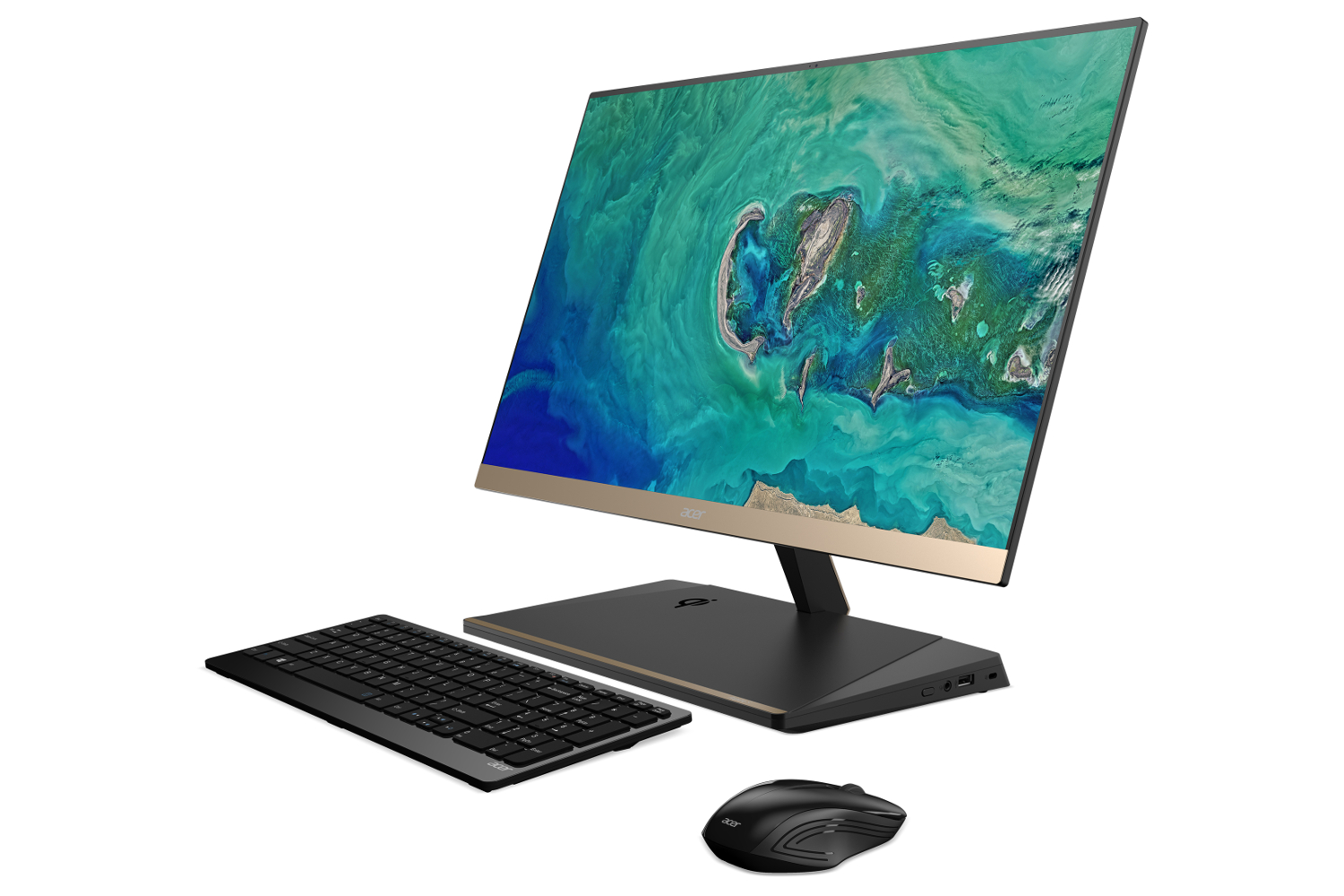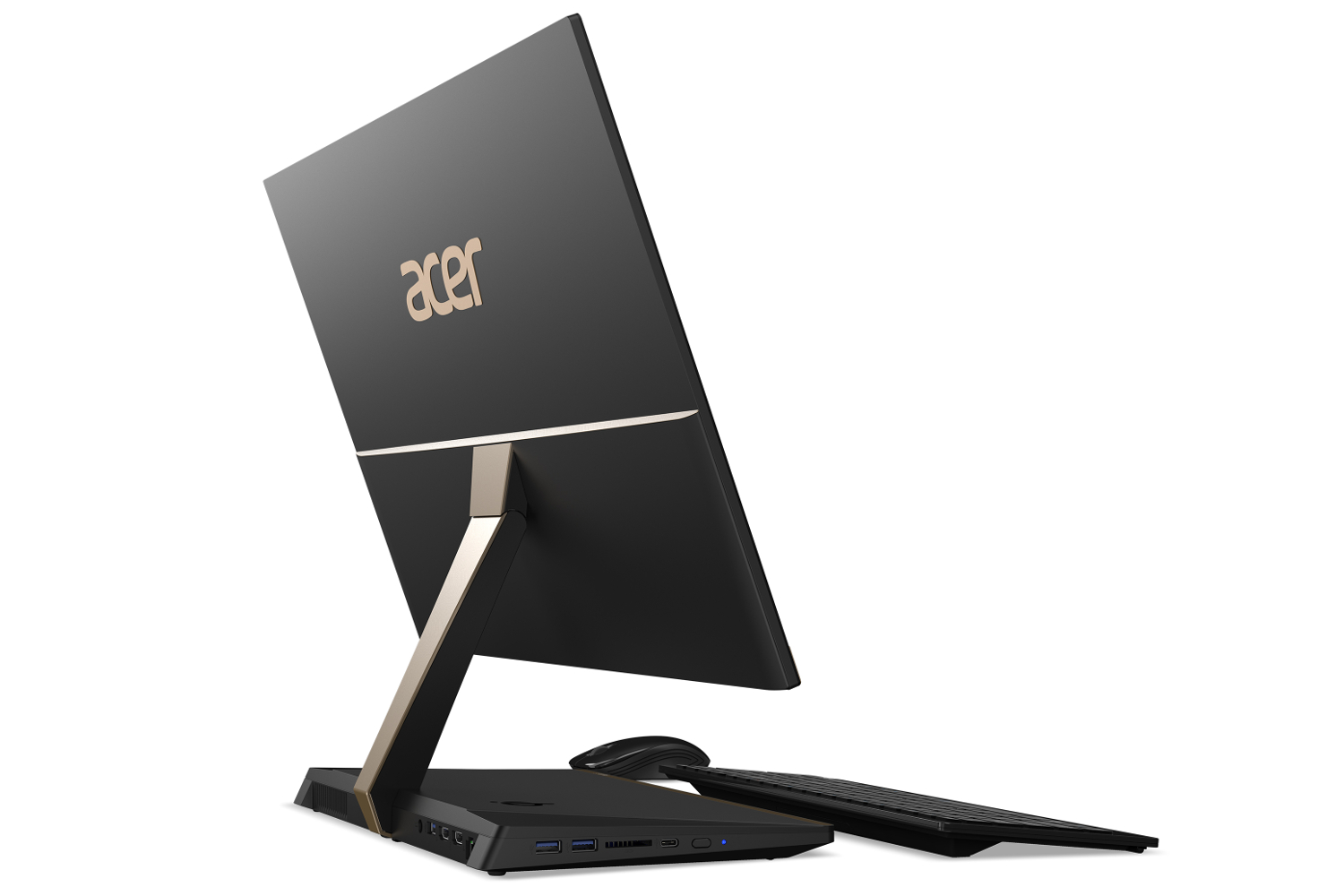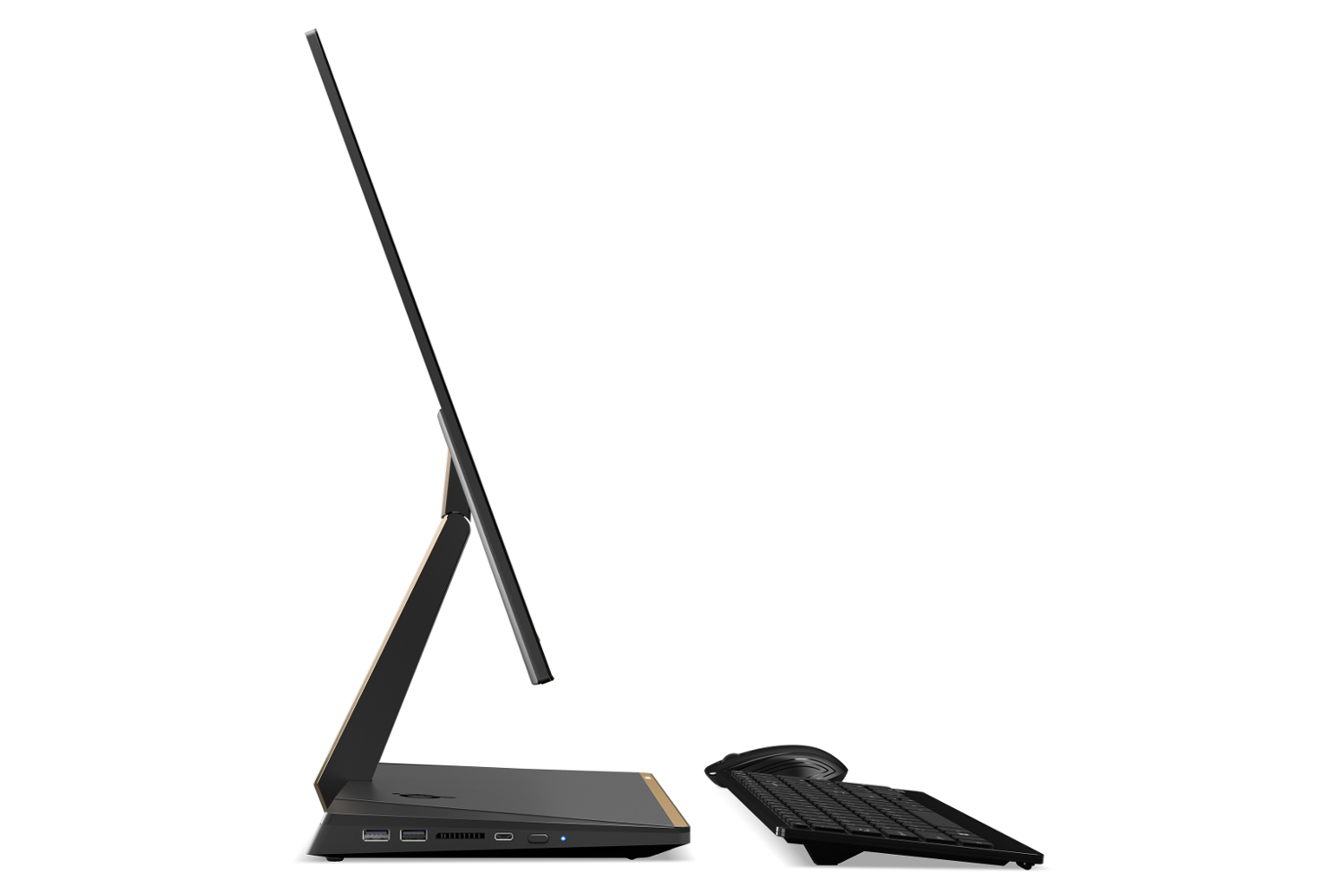On Monday, April 2, Acer introduced its thinnest all-in-one Windows 10 PC to date: The Aspire S24. The device boasts a 23.8-inch screen that is just 0.235 inches “thin” and sports 0.106-inch bezels to provide customers with more screen and less frame. The PC is based on the latest eighth-generation Intel Core i5 processor, a weird 12GB of system memory, and 1TB of storage that is likely based on a hard drive, given the all-in-one’s price tag.
Here is what we have:
| Screen size: | 23.8 inches |
| Screen type: |
In-plane switching |
| Screen resolution: |
1,920 × 1,080 |
| Screen thickness: |
0.235 inches |
| Screen bezel: |
0.106 inches |
| Processor: |
Eighth-generation Intel Core i5 |
| Graphics: |
Integrated |
| Memory: |
12GB DDR4 @ 2,400MHz |
| Storage: |
1TB |
| Audio: |
2× two-watt 2.1 channel speakers |
| Connectivity: |
Wireless AC (2×2) |
| Ports: |
1× Gigabit Ethernet |
| Extras: |
Built-in Qi wireless charging station |
| Price: |
$879 |
Acer’s Aspire S24 is set feature-wise: You won’t see variants or customization options. At the heart are Intel’s latest Core i5 processor and integrated graphics backing an IPS screen with a decent full-HD resolution. It’s not meant to be a gaming machine, but a productive tool that also looks extremely snazzy on your desk.
“Built with a dual focus on design and premium functionality, it makes a stylish, yet practical addition to any room,” the company boasts. “A black and matte gold color scheme lends the ultra-slim S24 a luxurious appeal.”
What is interesting about this all-in-one is that it sports a built-in wireless charging station for Qi-enabled devices. Even if your smartphone doesn’t support Qi wireless charging, you can always jump on Amazon and purchase an adapter for around $10 that connects to the Micro USB port and sits flat against the back of your device like a flexible credit card.
The all-in-one’s connectivity arsenal includes a handful of normal USB ports along with a slimmer USB-C port for adding a third display (the second would use the HDMI port), charging devices, and so on. Meanwhile, the Wireless AC component is your standard two-by-two setup where the hardware supports data speeds of up to 867Mbps. Bluetooth 4.2 covers Xbox One controllers, smartphones, audio headphones, and so on.
According to Acer, the company designed the screen for easy tilting between negative-5 and 25 degrees using just one hand. Other screen-focused features include BluelightShield to protect your brain’s Melatonin level, Flickerless technology to reduce eye-strain-inducing flickers, and ExaColor that increases color and saturation. Unfortunately, the company didn’t provide any actual facts regarding the screen’s brightness, contrast ratio, and so on prior to the official launch.
“Two two-watt 2.1 channel speakers with a subwoofer design enhanced with Acer TrueHarmony and Dolby Audio Premium infuse entertainment with deep bass as well as excellent clarity and volume,” the company adds.
Acer’s stylish new all-in-one, officially listed as the Aspire S24-880-UR12, will be made available in North America sometime during April for a set $880.




